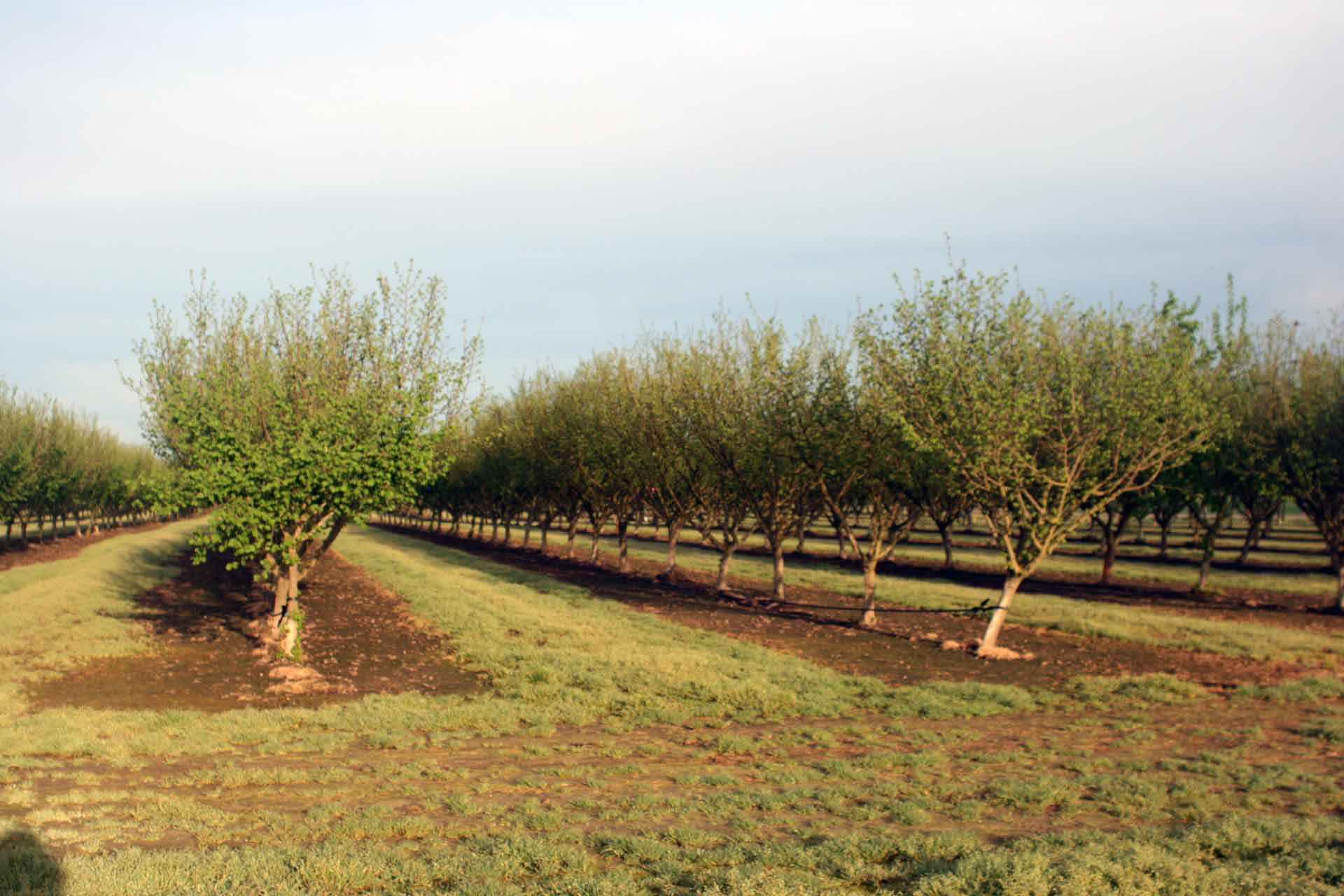Soil erosion can present an issue in young hazelnut orchards. Since a ton of soil per acre is only about the thickness of a penny, it doesn’t take long to displace or lose a large quantity of top soil. But according to Nick Sirovatka, acting state agronomist for Oregon Natural Resources Conservation Service (ONRCS), cover crops or conservation crops can help prevent soil erosion, as well as provide more nutrients and water to the tree roots.
“Before the canopy is over, there are different potentials for what you can do between the rows,” Sirovatka said. To illustrate this, he put on a demonstration during the Nut Growers Society Summer Tour at the Linn County Expo Center & Fairgrounds in Albany.
Demonstration
Sirovatka brought five samples from the North Willamette Research and Extension Center in Aurora, Oregon. All of the samples were from Willamette soil. Sirovatka pointed out that the samples were dried out, because they’d been taken two weeks prior, but still worked for the demonstration. The samples were:
- Grass with above-ground irrigation.
- Grass in the tree row, chemically controlled.
- A clover and grass combination. (Mow it every year, but leave the crop).
- Flailed, no soil structure; an organic system with heavy tillage.
- Naturalized system of perennial grass stands under the tress.
The samples were in metal trays with holes drilled in the bottom. Sirovatka set the trays up on a table at a slanted angle. He used an overhead sprinkler to water them for several minutes, representing rain. Clear plastic jugs hung under the samples to catch the run-off water and soil.
Sirovatka pointed out that there was no sample of flailed soil with branch prunings, leaves, etc… “That’s more of what’s found in established orchards,” he explained, “and this demonstration is for newer, younger orchards.”
While the sprinkler was running, Sirovatka showed a model with different sized Styrofoam balls to represent the largest to smallest particles of sand, silt and clay. Sand, which is 2 to .05 mm in diameter, was represented by the largest Styrofoam balls. Silt, which is .05 mm to .002 mm, was represented by the medium-sized Styrofoam balls, and clay, which is anything tinier than .002 mm, was represented by the smallest of the Styrofoam balls.
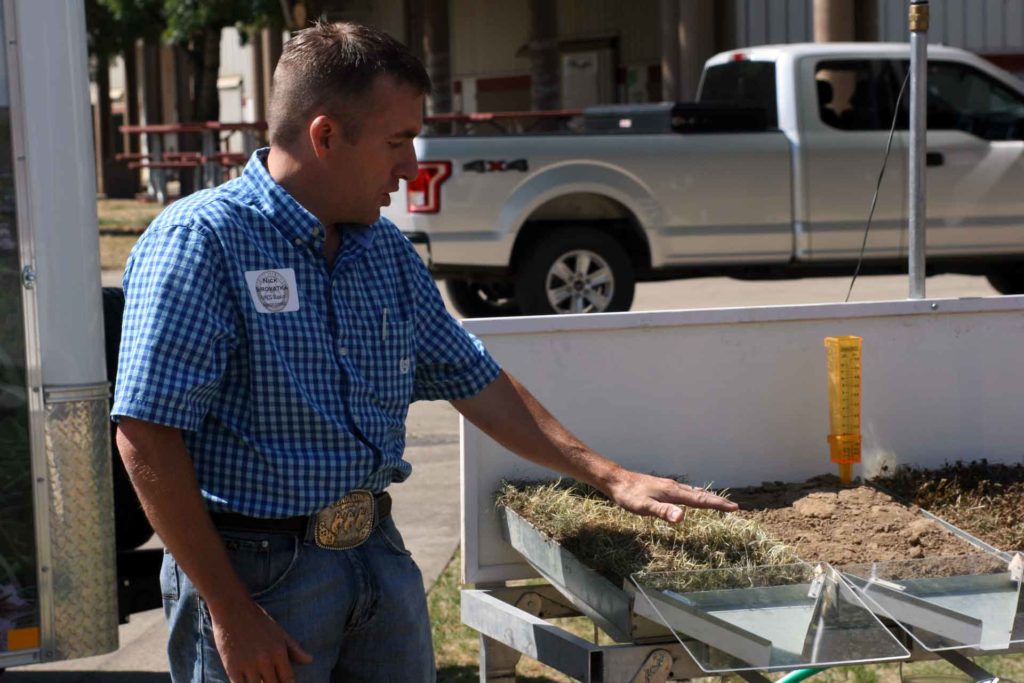
Demonstration Results
Once the samples were watered and the sprinkler turned off, Sirovatka, with assistance, removed the trays and flipped them over on a tarp.
Sirovatka removed the trays, leaving the soil exposed to show how much, or how little, the water penetrated, and to show how much root growth there was down into the soil, as well as how well the roots held the soil together.
The small crowd that had gathered between the buildings at the Linn County Fairgrounds to watch the demonstration converged around the tarp to compare the results of the different soil samples. Some of the hazelnut growers knelt to feel the soil. The samples with the most root growth were also the ones most saturated with moisture. Sample 4—the bare soil—crumbled apart. It had the most soil run-off into the plastic jugs, and showed little or no noticeable signs of water penetrating through the soil to the bottom of the tray.
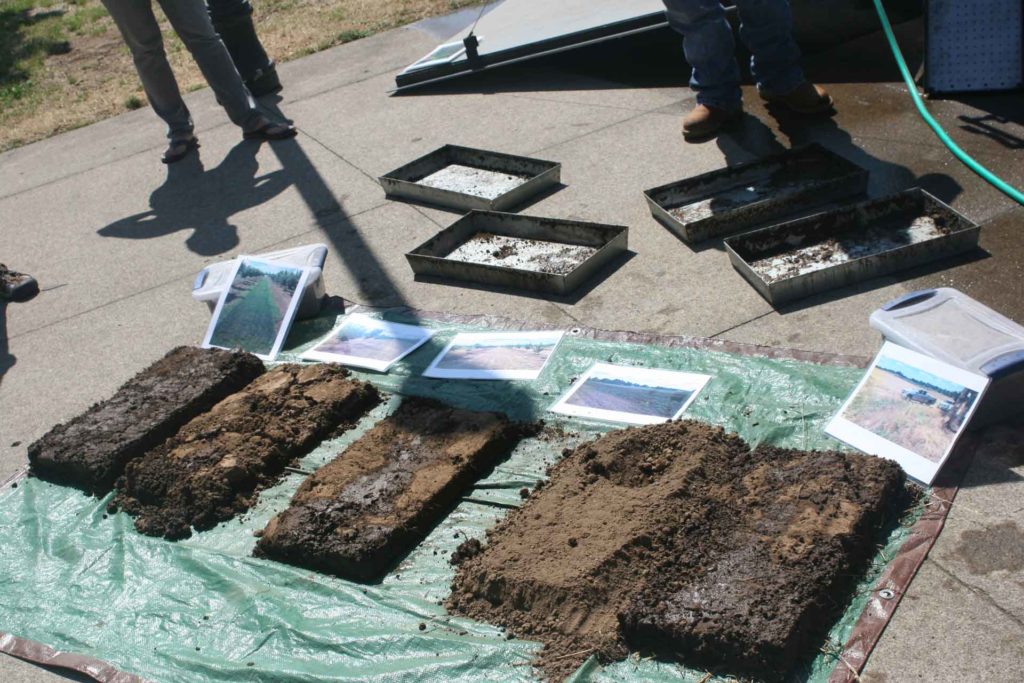
Roots Rule
As roots grow into the soil, Sirovatka explained, they protect and insulate the soil against breaking apart when a raindrop hits it. Rain on bare soil can create rills and gullies from run-off. Roots of all sorts, even dying roots, Sirovatka said, form a structure and help prevent erosion.
Living roots do even more to help surrounding plants grow, beyond helping pull water down into the soil. Living roots produce sticky root exudate, which are the chemicals secreted by roots into the soil. These exudates create more nutrients and micronutrients for plant life. Roots work to help regulate the microbial community in their immediate vicinity, and help support beneficial bacteria, fungi and nematodes. The roots exude many different compounds to help the plant deal with stresses such as herbivores, as well as to utilize mutually beneficial relationship with other plants or animals (symbiosis). The chemicals that roots secrete also change the physical and chemical properties of the surrounding soil, or rhizosphere. As much as 20 percent of all photosynthetically-fixed carbon transferred to the rhizosphere happens through root exudates.
To get these beneficial roots into the soil of hazelnut orchards, there are two sorts of crop covers to consider: A conservation cover, which is made up of a perennial plant or plants; and a cover crop, which is an annual—let it grow, harvest it or not, then destroy it by tilling it under. Even the tilled root structure works to store and bind more carbon, helping hold water in soil.
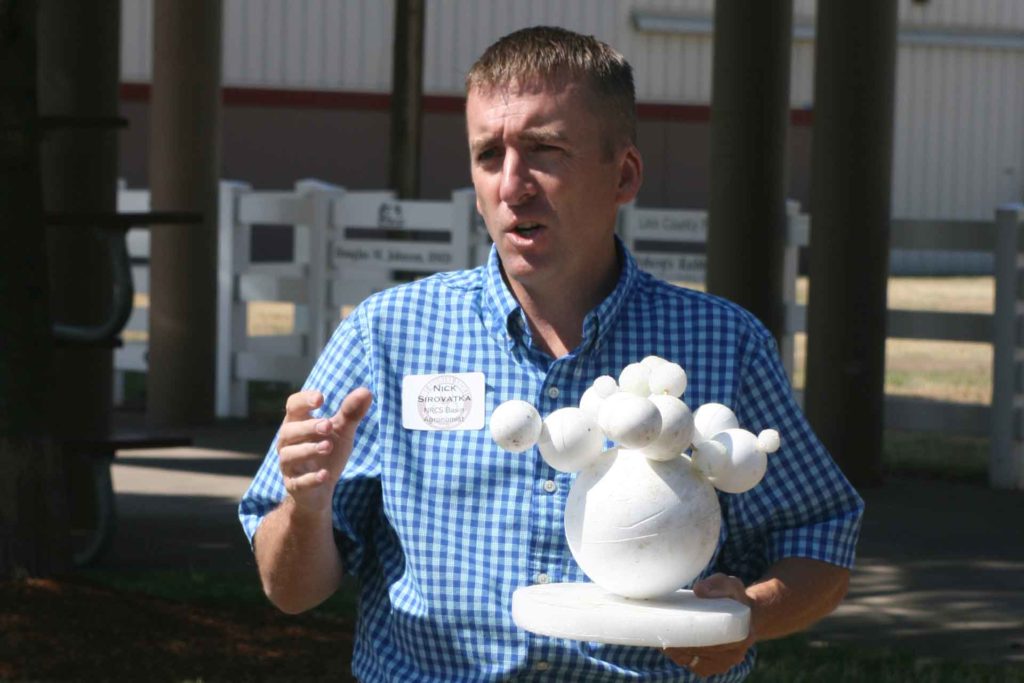
Various Crop Covers to Consider
There are many different crops, both annual and perennial, that can be grown alongside hazelnuts. Jeff Newton, farm manager for Crimson West/Christensen Farms in McMinnville, Oregon, has experimented with many different crops between the rows of trees. He’s tried wheat in the past, (not very successful) seed vegetables, such as dried peas (successful), several different varieties of clover, flax, and both annual and perennial grasses, with varying degrees of success. He’s also grown stands of wild grasses. He’s discovered that poa, an annual grass, while a scourge of a weed to most grass seed farmers, actually makes a great cover crop among hazelnuts. He’s even planted poa (Greek for “fodder”) on purpose from seed. Jeff did mention that commercially grown poa seed is not easy to come by.
Other grass crops to try include fine fescue and creeping red fescue. The seed can be a cash crop when the hazelnut trees are young. As the tree canopy grows over, the fescue may no longer provide a seed crop, but it can still provide benefits to the orchard. Growers do have to stay on top of growth by mowing the grass six to eight times a year. Leave the clippings in place to act as fertilizer. It will cut down on conventional fertilizer costs. The roots will help provide better soil, and hold the soil in place to protect it from water and wind erosion.
“We understand not every orchard is going to be able to do a row cover,” Sirovatka said. He mentioned biochar, which can be used as a soil amendment. It’s good for improving yield in plants that require high potash and elevated soil pH. Biochar helps reduce leaching of nutrients, and can reduce fertilizer and irrigation requirements.
Even stands of native grasses, either planted on purpose, or simply left to grow wild under young hazelnut trees—while not providing cash flow the way some cover crops might—will still provide that root structure for better soil health, as well as help prevent soil erosion.
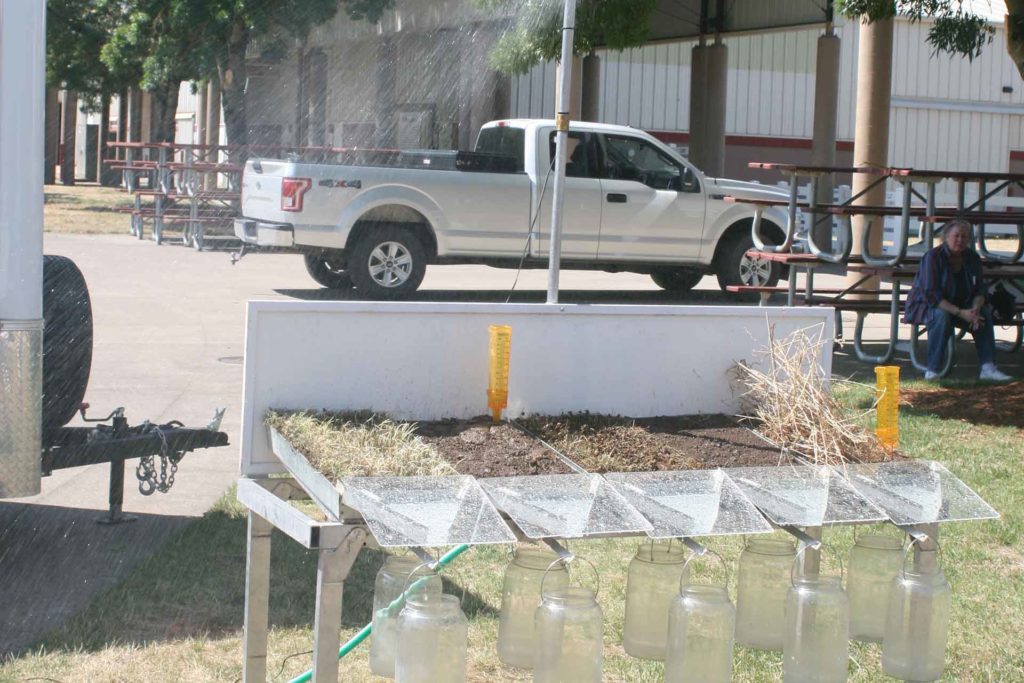
Cover Crop Funding Available
Up to 100 percent of cover crop funding is available through the United States Department of Agriculture’s (USDA) Environmental Quality Incentives Program to hazelnut growers in Marion, Polk, Washington and Yamhill counties. For more information, contact one of those county’s USDA service centers. In Marion County, call Les Bachelor at 971-273-4816. In Polk County, contact Evelyn Conrad at 503-83703689. In Washington County, call Jessica Wells at 503-207-7949. And in Yamhill County, you can reach Thomas Hoskins at 503-376-7605.


